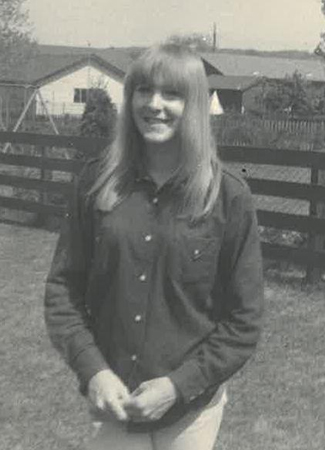
Jacqueline Dunleavy, age 16
Murdered 9 January 1968
On Tuesday, January 9, 1968, Jacqueline Dunleavy was working at the Stanley Variety Store on Stanley St at Wharncliffe Rd. She finished work at 6:35pm and was last seen walking out the front of the store. At 8:10pm, three youths found Jacqueline at the Katherine Harley School (today’s Matthews Hall) on Oxford St west of Sanitorium Rd. Upon arrival of the London Police Force she was pronounced dead.
Our investigation found that the cause of Jacqueline’s death was homicide. Although she had suffered a head injury, the cause of death was strangulation.
Jacqueline was a 16-year-old grade 10 student at Westminister Secondary School when she was murdered.
On January 9th, 1968, 16-year-old Jacqueline Dunleavy finished her shift at the Stanley Variety Store located on Stanley Street at Wharncliffe Road in London, Ontario.
At approximately 6:35PM, Jacqueline locked up the store and headed into the cold, dark evening to make her way home. She walked two blocks south to her usual bus stop.
Witnesses reported seeing Jacqueline waiting at the bus stop, and at least one individual saw her enter a white four-door sedan, most likely a Chrysler.
At around 7:00PM, Jacqueline’s parents became concerned and began to search for their usually prompt daughter. Her mother called the store, London Transit Commission, and reached out to Jacqueline’s friends. With a growing sense of dread, Jacqueline’s father, Constable John Dunleavy, started driving her route home, looking for any trace of his daughter.
At approximately 8:10PM, three teenaged boys stumbled upon Jacqueline’s body while parking in the lot at the then (horrifyingly) named Katherine Harley School for Retrainable Retarded Children (today Matthew’s Hall); before their discovery, the trio had been keen to go tobogganing at the London Hunt and Country Club.
The autopsy later revealed that the left side of Jacqueline’s face and head had been severely beaten, her body had been scratched repeatedly by what appeared to be the murderer’s fingernails, there was no indication of sexual penetration, and she had been strangled with her scarf. It has been suggested that the injuries that occurred to Jacqueline’s left side may have happened while she was in the passenger seat of the vehicle that picked her up from the bus stop.
The tire-tread impressions found in the snow at the crime scene are some of the best evidence in Jacqueline’s case. The authorities brought in special lighting, took multiple photographs, and made plaster casts of the impressions. Vehicle experts determined that the prime suspect in Jacqueline’s murder drove a unique vehicle with “four completely different tires in terms of make, model, and tread depth, in addition to the worst alignment problems they had ever seen in a vehicle still operating and on the road in the wintertime.”
A tremendous amount of forensic evidence was found at the crime scene, including blood, semen, and the tire-tread impressions mentioned above; however, both this treasure trove of evidence and a police investigation that has spanned decades have yet to identify Jacqueline’s killer...
LINK:
CIRCUMSTANCES On Tuesday, January 9, 1968, Jacqueline Dunleavy was working at the Stanley Variety Store on Stanley St at Wharncliffe Rd. She finished work at 6:35pm and was last seen walking out the front of the store. At 8:10pm,
canadiancrimeopedia.com




